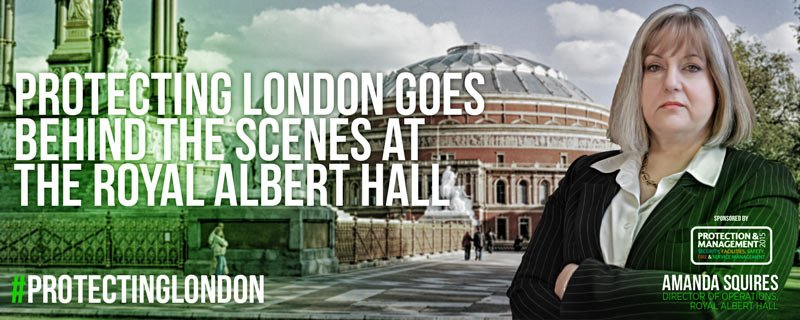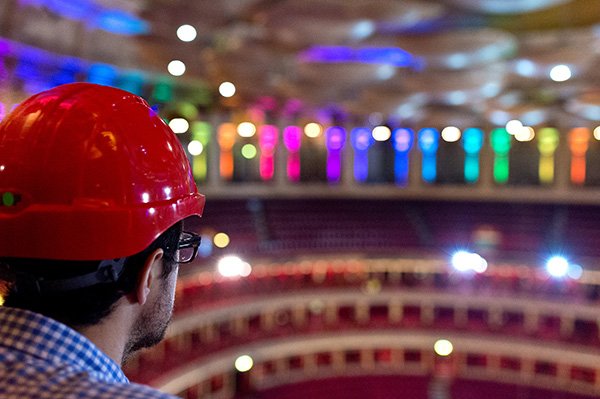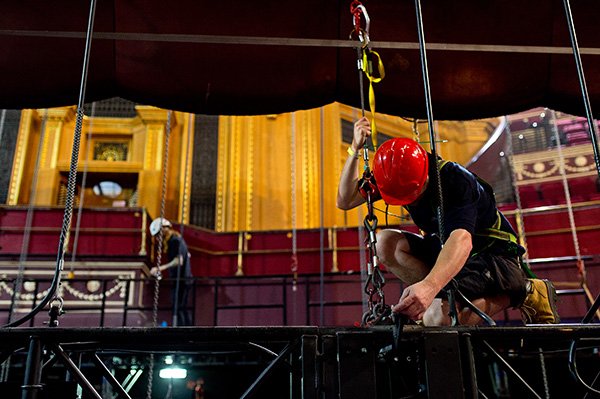Protecting London: The Royal Albert Hall
 How do safety measures compare in world-class concert halls and large-scale exhibition venues? How do security, facilities and safety teams protect workers in the country’s smartest office blocks and biggest construction sites?
How do safety measures compare in world-class concert halls and large-scale exhibition venues? How do security, facilities and safety teams protect workers in the country’s smartest office blocks and biggest construction sites?
New for Safety & Health Expo 2015, ‘Protecting London’ is a series of videos and live debates exploring how security, safety, facilities and fire functions operate in some of the capital’s most fascinating landmarks.
Episode two takes us to the Royal Albert Hall, where the Director of Operations, Amanda Squires, tells us about health and safety in a venue that “can be like an entirely different building every single day.”
An explosion in activities
Amanda is responsible for a team of over 290 people who look after all front of house and back of house delivery. This includes health and safety as well as security and facilities management.
She has been at the Hall for 9 years, and during her time she’s seen an ‘explosion in activities’ which she describes as the single biggest challenge she has faced.
“When I first joined…we did about 350 events, mainly in the main auditorium. Last year we did 397 in the main auditorium and another 450 events in different areas of the Hall. And they can be across the full gambit of activities, from schools events, performances, conferences, sporting events, workshops.”
Every event can bring different performers, production teams, promoters, and security staff through the doors, which means there might be over 100 different people working in the building every day.

Credit: Getty/Ben A. Pruchnie
Risk assessments, method statements and house rules
With this level of activity, it’s key that clients understand house rules and submit risk assessments and method statements well in advance of an event.
“It’s very much about communicating and trying to get a lot of information before the day of the event and on the day briefings,” Amanda says.
Health and safety forms must be submitted at least four weeks prior to an event, and assessments and methods at least two weeks prior.
This information, along with a lot of the Royal Albert Hall’s health and safety policies, can be found on their website. Here are 10 excerpts from the publicly available ‘Event Safety Information for Visiting Companies’ download.
- First aid: All of our Security Staff are first aid trained. During public access periods this is further supplemented by one or more qualified nurses or paramedics from our medical provider. With large numbers of children additional first aiders are required.
- Slip and trip hazards: Cables crossing walkways and main performance thoroughfares must be secured or covered, and if necessary clearly marked to prevent the possibly of slips and trips occurring or damaging equipment.
- Control of Substances Hazardous to Health (COSHH): All contractors should carry detailed information on any hazardous substances or activities that may give rise to hazardous substances within the Hall. Prior approval will be required from the Hall.
- Pyrotechnics, smoke effects, firearms and the use of naked flame: Any use of any special effects including dry ice, pyrotechnics, firearms and naked flames must be essential to the performance and be notified to the Hall as soon as possible, but at least four weeks before the event, in order for the Event Manager to arrange the permissions required from WCC.
- Laser safety: The use of any laser must be deemed to be essential to the performance and details (such as power output) notified to the Hall at least four weeks in advance of your event.
- Work at height: All work at height should be subject to a specific risk assessment… Methods of rescue must also be considered as part of this assessment… The proposed methods should be communicated with the TSM responsible for the show in advance.
- Electrical safety: The connection and disconnection of power supplies to contractor’s equipment may only be undertaken through Technical Show Managers.
- Hardhat policy: A mandatory hard hat area will be declared in the auditorium whenever there is work being carried out overhead. This will be notified by flashing orange beacons and signage in the back of stage areas, in and around the auditorium, and by tannoy announcement.
- Hot works: Any work involving ‘hot’ processes such as welding will require a permit to work issued by Stage Door. This will require certain additional precautions to be undertaken to avoid the possibility of fire.
- LPG and Flammable Gases: LPG i.e. butane and propane is not permitted for cooking nor for use in special effects due to the nature of the building and its unusual design.
Health and safety challenges with contractors
When asked about the biggest health and safety challenges at the Royal Albert Hall, Amanda highlights managing contractors who service the building and equipment.
She stresses the importance of “making sure they are well controlled and supervised, we know who’s going to be working where and exactly what they’re going to be doing”.
A lot of their work is done at night because their packed events schedule makes it the only time they can gain access to the building. “But even then”, Amanda says, “increasingly shows and technology are getting increasingly more and more complex, events want to load in earlier and load out later, so even our night time periods are getting a little bit squeezed.”

Credit: Getty/Ben A. Pruchnie
Close collaboration between safety and the rest of operations
To keep on top of the multitude of activities taking place in the Hall, close collaboration between safety, security and facilities teams is key.
Amanda explains, “It’s been incredibly successful to have all of the key facilities, security areas integrated…I think it’s made it much easier to run the building, protect the building and operate in the most efficient way.”
Hear more about health and safety at the Royal Albert Hall
Amanda is joining the Protecting London panel debate at Safety & Health Expo 2015, along with the British Museum’s Health & Safety Manager and Crossrail’s Security Manager. Read more about the expo here and register to attend here for free.
You might also like to watch Protecting London Episode 1, with the Health and Safety manager of the British Museum.
And finally, be the first to see Protecting London go behind the scenes with the Health and Safety Manager of Crossrail by following @SHPOnline on Twitter.
Protecting London: The Royal Albert Hall
How do safety measures compare in world-class concert halls and large-scale exhibition venues? How do security, facilities and safety teams
Safety & Health Practitioner
SHP - Health and Safety News, Legislation, PPE, CPD and Resources Related Topics
VIDEO: What is authentic leadership?
‘A business can’t be successful if it’s unsafe’
‘People are now looking for professionals that not only have technical skills, but also core skills, and behavioural skills’




Is there special security for events at the Albert Hall, in view of the terrorist threats in and around London ?
Did anyone responded? My daughter is singing in the RAH this Wednesday as part of a schools choirs event and I’m quite concerned.